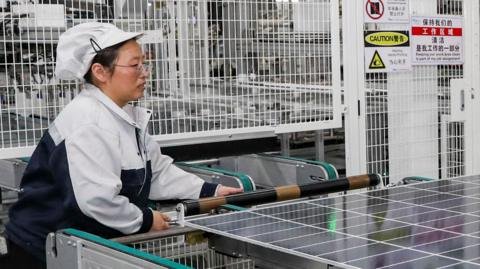Solar Panel Shock: US Set to Impose Eye-Popping Tariffs of 3,521% on Southeast Asian Imports!
The US Commerce Department is preparing to impose staggering tariffs on solar panels imported from four South East Asian nations—Cambodia, Thailand, Malaysia, and Vietnam—with rates reaching as high as 3,521%. This drastic move follows a year-long investigation initiated after domestic solar equipment manufacturers urged the government to safeguard their interests against allegations of subsidies from China and practices of dumping low-cost products into the US market.
The proposed tariffs—known as countervailing and anti-dumping duties—will vary by company, with some exporters in Cambodia facing the highest penalties due to a perceived lack of cooperation during the investigation. For instance, Jinko Solar, a Chinese manufacturer operating in Malaysia, is set to incur a comparatively low duty of just over 41%, while Trina Solar, also from China, would face a 375% tariff on its products made in Thailand.
These tariffs are a continuation of strategies initiated during former President Donald Trump’s administration, aiming to address the influx of solar products from China, which has seen many firms relocate their production to South East Asia to dodge previous tariffs. U.S. manufacturers welcomed the Commerce Department’s findings, claiming it reaffirms the unfair advantages held by Chinese-headquartered companies within the industry.
Significantly, in 2023, the U.S. imported nearly $12 billion worth of solar equipment from these four countries, highlighting the extent to which American businesses have relied on these cheaper imports. However, the new tariffs could result in increased costs for both businesses and consumers, contradicting the benefits of having access to affordable solar solutions.
This announcement arrives shortly after Chinese President Xi Jinping concluded a diplomatic tour in Vietnam, Malaysia, and Cambodia, promoting stronger ties in light of US pressures, which he described as “unilateral bullying.” The potential repercussions of these tariffs are monumental, with earlier taxes on Chinese products already reaching up to 145%. In retaliation, China has introduced a 125% tax on various US goods, signaling a brewing trade conflict.
As the International Trade Commission is slated to finalize the new tariffs by June, the implications of these decisions will unfold in what could reshape the landscape of the solar industry in the U.S. and beyond.

